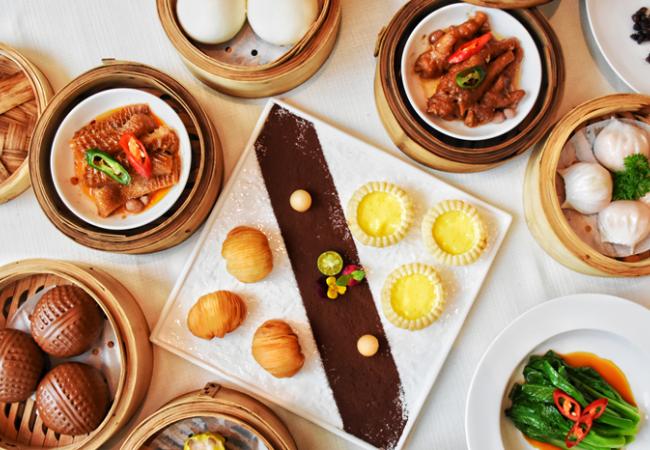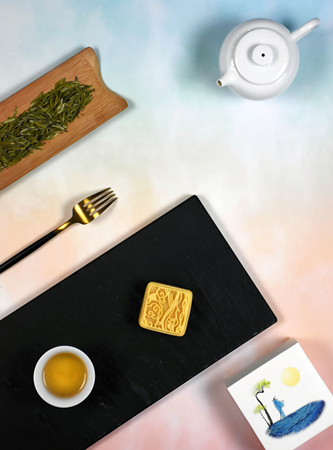2024年10月7日,西班牙,圣塞巴斯蒂安 (San Sebastian,Spain),Sara Peral和Jorge Muñoz来到Gastronomika分享他们的美食革命,该餐厅今年获得了第一颗米其林星级。

他们在Coque和La Tasquita等顶级餐厅接受过培训,在Mugaritz相遇,尽管他们花了一段时间才联手,一个通过DiverXO、Pedegrú和Lafayette,另一个通过La Tasquitta和Picones de María。毫无疑问,所有这些都是这对成功组合的最佳证明,这对组合彻底改变了首都的美食界。在他们的餐厅米其林一星餐厅Osa,他们准备了一种当地和时令的美食,没有掩饰,有餐厅的温暖。Sara说:“我们不是以前去过的餐馆,我们想创造自己的命运,展示自己理解美食的方式。”。
Jorge和他的搭档Álvaro负责定义Osa的三个价值观,这些价值观是定义这条道路的基点。Jorge说,母亲和家庭是一种保护性身份的保证者,这种身份吸引了家庭和温暖,他们在提出该提案的机构中反映了这一点,“城市岸边的房子,远离柏油路的和平避风港”,在那里他们提供过去的美食,着眼于现在,“因为当传统比前卫更好时,你必须去追求它”。他们认为,家庭也是他们所取得的成就,形成了一个团队,“没有等级制度或职位,只有目标和责任,每个人都可以在厨房和餐厅发展出自己最好的技术”。
他们谈到了与他们的狂野烹饪概念有关的第三个基本点,即对产品、产地和季节的最大尊重,以及烹饪技术,如腌制和保存,以充分利用它。季节性和休息,时间总是最好的成分,”他们说。
治愈的艺术
为了证明那些认为Osa是激进的、只会做饭的人是错误的,今天Kursaal厨房在秋季菜单上推出了两道功能强大的菜肴。一方面,鹌鹑被整只腌制两周,然后去骨,用盐、糖和胡椒腌制的熏肉片包裹四个月,然后用盐水腌制的葡萄叶包裹,并用“袜子制造商用传统方式为我们做的”网绑起来。将其再成熟一周,“以获得类似于指关节的质地”,以奖章的形式食用,浸泡在由烤鹌鹑肉和少量黄油制成的肉汤中。

第二道菜是由猪肉碎与葡萄酒和香料混合制成的zampone,在凯尔特猪的腿内熟化一个月,“直到它失去30%的体积”,“因为它是整个半岛上四肢最大的品种,它的肉非常多汁,脱水能力更强”。其中一部分在高压锅中用网煮熟,与Daganzo鹰嘴豆一起食用,“这种鹰嘴豆皮很小,吸收味道的能力很强”,用猪尾制成的肉汤冲下。
Osa's wild cuisine that reclaims the home
Sara Peral and Jorge Muñoz come to Gastronomika to share the revolution of their cuisine, which was awarded its first Michelin star this year.
Trained in top restaurants such as Coque and La Tasquita, they met at Mugaritz, although it took a while for them to join forces, one through DiverXO, Pedegrú and Lafayette, the other through La Tasquita and Picones de María. All of which are undoubtedly the best credentials for the successful tandem that has revolutionised the capital's gastronomic scene. In their restaurant, Osa*, they prepare a cuisine of the land and the season, without masking it, and with the warmth of a restaurant. We are not the restaurants we have been to, we want to create our own destiny and show our own way of understanding gastronomy,' says Sara.
Jorge and his partner, Álvaro, were responsible for defining Osa's three values, which serve as cardinal points to define this path. Mother and home, as guarantors of a protective identity that appeals to family and warmth, which they have reflected in the establishment that houses the proposal, 'a house on the banks of the city, a haven of peace away from the asphalt', where they offer a cuisine of the past with an eye to the present, 'because when tradition is better than the avant-garde, you have to go for it', says Jorge. And family is also what they have achieved, forming a team "where there are no hierarchies or positions, only objectives and responsibilities, where everyone can develop their best technique, both in the kitchen and in the dining room", they argued.
And they spoke of the third cardinal point in relation to their Wild concept of cuisine, based on maximum respect for the product, its origin and season, as well as cooking techniques such as curing and preserving to get the best out of it. Seasonality and rest, time is always the best ingredient," they say.
The art of curing
And to prove wrong those who think that Osa is radical and only cooks game, today the Kursaal kitchen has introduced two powerful dishes to its autumn menu. On the one hand, the quail is cured whole for two weeks, then boned and wrapped in slices of bacon cured with salt, sugar and pepper for four months, then wrapped in vine leaves cured in brine and tied in a net "that a stocking maker makes for us in the traditional way". It is left to mature for another week 'to obtain a texture similar to that of a knuckle', to be served in the form of a medallion, bathed in a broth made from the roasted carcasses of quail and a little butter.
The second dish was a zampone made from minced pork mixed with wine and spices and matured for a month 'until it loses 30% of its volume' inside a Celtic pig's leg, 'because it is the breed with the largest limbs in the whole peninsula and its meat is very juicy and has a greater capacity for dehydration'. A portion was cooked in a pressure cooker in a net and served with Daganzo chickpeas, "a variety with very little skin and a great capacity for absorbing flavours", washed down with a broth made from pig's tails.







